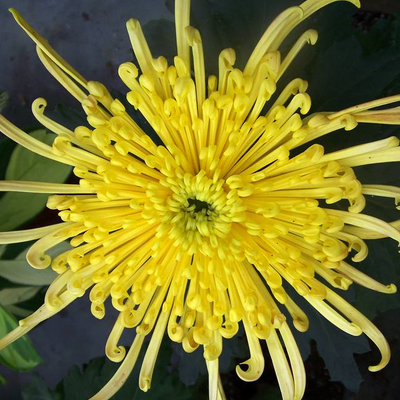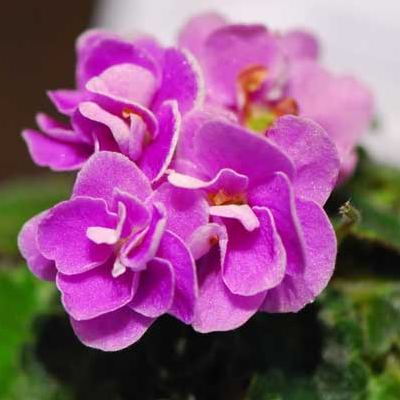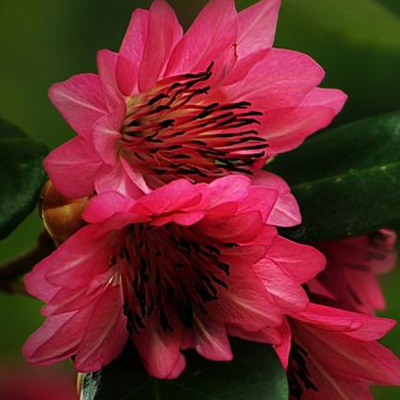How to cut chrysanthemum in August?
Chrysanthemum is the flower of autumn, and it is also the representative of autumn. it usually blossoms from August to October, so can you cut chrysanthemum in August? How to cut chrysanthemums?

Can you cut chrysanthemums in August:
Chrysanthemums can be propagated by cutting, but cutting chrysanthemums depends on the time and season.
It is best to cut chrysanthemums in spring and early summer, because in August, the weather has already entered autumn, and the florescence of chrysanthemums is coming soon. At this time, chrysanthemum cuttings need to take root again, which takes a very long process. It is easy to lead to malnutrition when blooming, and the flowers are small and small. At this time, it is best to transplant with roots.
How to cut chrysanthemums:
1. Cut the branch of the chrysanthemum from the middle, keep the upper part, and cut it according to the length of 20 cm.
2. One leaf bud should be retained in each branch and the terminal bud should be retained in the top part. Then soak in rooting powder solution for 2 hours.
3. To choose soil with a lot of humus, water the soil first, then insert a hole 6-8 cm deep with a stick, put the chrysanthemum branches into the hole, and then press the soil.
4. after pressing the branches, spray water again, spray wet and spray through, and put them in a cool and ventilated place.
5. After spraying water, make an awning, cover it during the day and open it at night. Spray water with a spray can on time to keep the soil moist.
6. after the upper leaf buds are born, the sun can be seen appropriately in the morning and afternoon, but it can not be exposed at noon.
7. After the cuttings survive, you can transplant and see more sunshine. At this time, water should be controlled and watering should not be too frequent to avoid growing too fast.
All right, that's all for the introduction of chrysanthemums. Friends, you all know clearly that it is best not to cut chrysanthemums in August.
Chrysanthemum cuttage technology (Huayou experience version)
Chrysanthemum cutting is an important means of chrysanthemum reproduction, for ordinary flower friends, it is not important to understand chrysanthemum cutting technology, but also to understand chrysanthemum cutting time, so as to improve the survival rate. Chrysanthemum cutting can be carried out from mid-March to early August. Cutting in July and August is often cultivated as a single chrysanthemum.
Family potted chrysanthemums generally leave the root buds after the first year, and let them sprout again from the roots in the spring of the second year. If these flower buds continue to grow, the branches will be very long in autumn, which is very ugly and few in number. So the branches must be cut off before cutting.
The cutting of chrysanthemum is called soft cutting, which is different from the hard cutting of woody flowers such as rose, rose, gardenia, hibiscus and so on. Chrysanthemum is herbaceous flowers, and soft cutting uses the upper part of branches with terminal buds. The specific operations are as follows:
1. Cut the branch of the chrysanthemum from the middle, keep the upper part, and cut it according to the length of 20 cm.
2. One leaf bud should be retained in each branch and the terminal bud should be retained in the top part. Then soak in rooting powder solution for 2 hours.
3. To choose soil with a lot of humus, water the soil first, then insert a hole 6-8 cm deep with a stick, put the chrysanthemum branches into the hole, and then press the soil.
4. after pressing the branches, spray water again, spray wet and spray through, and put them in a cool and ventilated place.
5. After spraying water, make an awning, cover it during the day and open it at night. Spray water with a spray can on time to keep the soil moist.
6. after the upper leaf buds are born, the sun can be seen appropriately in the morning and afternoon, but it can not be exposed at noon.
7. After the cuttings survive, you can transplant and see more sunshine. At this time, water should be controlled and watering should not be too frequent to avoid growing too fast.
Fertilization begins after September. Nitrogen fertilizer is initially used, or compound fertilizer can be used to promote the growth of branches and leaves. After October, more phosphate fertilizer is applied to promote the growth of flower buds. At this time, attention should be paid to spraying pesticides, "monocrotophos" or "one-time purification". To prevent the breeding of aphids.
9. After the buds grow out, only one large bud is left, and the extra buds should be pinched. At this time, fat and water must keep up, and the flowers will gradually bloom at the end of October (I mean the Qingdao area).
Which flowers and plants are suitable for planting in August?
Sowing: next spring flowering daisy, carnation, golden calamus, osmanthus bamboo incense, black chrysanthemum, goldfish grass, tricolor pansy, a string of red, violets.
Cuttings: brocade, rose, mast, colored leaf grass, honeysuckle, five-colored grass.
Ramet: Huanghua, Shegan, Hosta, Iris, Hemerocallis, Chrysanthemum.
Strip: rose, eight Immortals.
Grafting: plum blossom, cherry blossom, rose, purple leaf plum, Xifu begonia, cactus. Management key
Watering: in August, if the air humidity decreases and the flower plants grow bigger and bigger, it is necessary to increase the amount of water to the flowers. On a sunny noon, we should spray or look for water to the flowers according to the situation. For some overgrown and less flowering plants, buckle water to promote their flower bud differentiation. Do not let the Gladiolus plants that have already grown scape lack of water, otherwise the top of the flowers will bend, and it will be difficult to restore the upright state after watering.
Fertilization: many flowers have entered or are about to enter the fastest growing period of the year. At this time, most of them are chrysanthemum, chrysanthemum, dahlia, Dutch chrysanthemum, thistle, cockscomb, chrysanthemum, kudzu, canna, broom grass, five-color grass, wild goose red, a bunch of red fertilizer, topdressing can be irrigated, leaf spraying. No matter what kind of flowers are fertilized, we should master the principle of less first and then more, thin first and then thick. In addition, the length of fertilization interval should be determined according to the size and growth of the plant. The flowers with small plants and weak growth can be fertilized for 5-7 days, and the flowers with large plants and strong growth can be fertilized once every 3-5 days. If organic liquid fertilizer is used, adding a small amount of urea and potassium dihydrogen phosphate into it will have a better effect on the growth and development of flowers.
Lighting: for fast-growing flowers, it is necessary to transplant or enlarge the distance between flowerpots in time to facilitate light penetration. The leaves that cover the ears of grapes are properly removed to facilitate photosynthesis and better coloring. Chrysanthemums and poinsettias treated with short-day exposure should be protected from light leakage during the day. Open the hood at night and take care to avoid the light or moonlight, otherwise their florescence will often be delayed. As a flower arrangement, potted flowers of the evening fragrant jade, do not put under the light at night, it is best to put in a dark place, so that the fragrance of the flowers will be stronger.
Temperature regulation: it is best to put mulberry, lotus, water lily and arched flower blue in the leeward and sunny place, which can increase the temperature of the small environment and prolong their flowering period. When the five-finger eggplant blossoms, try to lower the ambient temperature. Because when the temperature exceeds 30 ℃, the flowers of Wuzhi eggplant are often poorly fertilized and not easy to bear fruit.
Pruning: give the Dutch chrysanthemum three weeks in advance and a string of red ones four weeks in advance to control their blooming at the scheduled time. After setting the bud for the dahlia, breaking off all the lateral buds and foot buds of the plant can make the flower bloom bigger and control the florescence of the dahlia. At the beginning of the month, the geranium is knocked on the basin and pruned, which can ensure multiple branches and blossom frequently in the coming year. Pick off the ornamental pumpkin at the end of this month, otherwise it is not easy to mature in autumn and affect the quality of other ornamental pumpkins on the plant.
Change the basin: plant early chrysanthemum and cliff chrysanthemum on the budding ground. In the first two days from the dunes, first irrigate a permeable water, which is easy to operate and can reduce the occurrence of startled tuo. Change the basin for calla lilies, cyclamen, and hang the golden bell upside down.
Disease prevention: for rose, impatiens and Dutch chrysanthemum, which are prone to powdery mildew, in addition to spraying every other half a month, we should also reduce water spraying and pay attention to ventilation.
- Prev

How long is the florescence of African violets? why don't they blossom?
African violets are very small mutual flowers, and they are also very suitable for the most ornamental plants, so how long is the florescence of African violets? Why don't African violets bloom? How long is the florescence of African violets: when it comes to the flowering time of Corydalis, cuttings are needed to propagate.
- Next

What is the minimum tolerance of Carthamus tinctorius? how to cut and propagate? what is the flower language?
Safflower lotus this plant is generally planted in the garden, but also as a garden plant to cultivate, then safflower lotus can bear at least how many degrees? How to cuttage propagation of safflower lotus? What is the language of Safflower and Lotus? What is the lowest tolerance of Carthamus tinctorius: neutral shady tree species, young trees are shade-tolerant and prefer light in adulthood
Related
- Fuxing push coffee new agricultural production and marketing class: lack of small-scale processing plants
- Jujube rice field leisure farm deep ploughing Yilan for five years to create a space for organic food and play
- Nongyu Farm-A trial of organic papaya for brave women with advanced technology
- Four points for attention in the prevention and control of diseases and insect pests of edible fungi
- How to add nutrient solution to Edible Fungi
- Is there any good way to control edible fungus mites?
- Open Inoculation Technology of Edible Fungi
- Is there any clever way to use fertilizer for edible fungus in winter?
- What agents are used to kill the pathogens of edible fungi in the mushroom shed?
- Rapid drying of Edible Fungi

